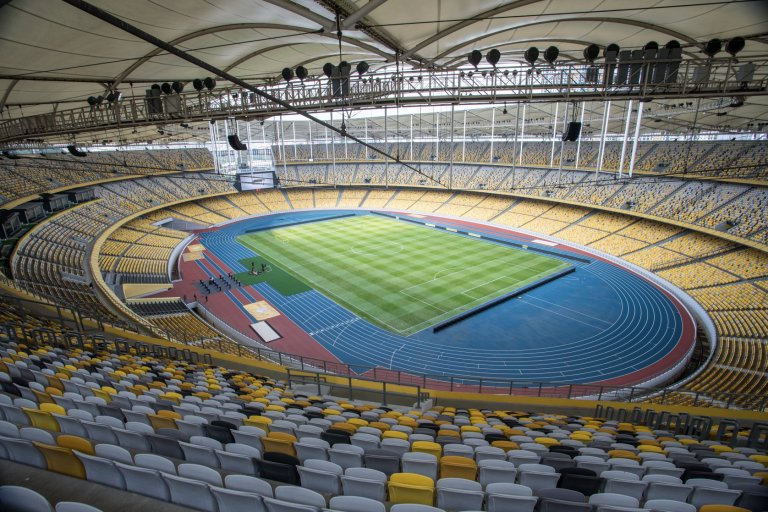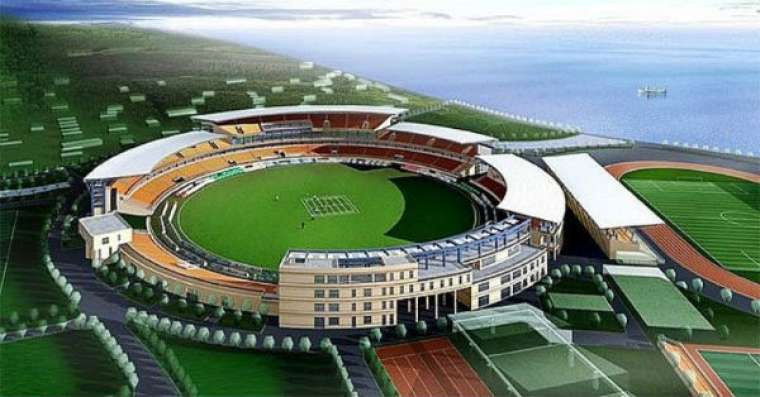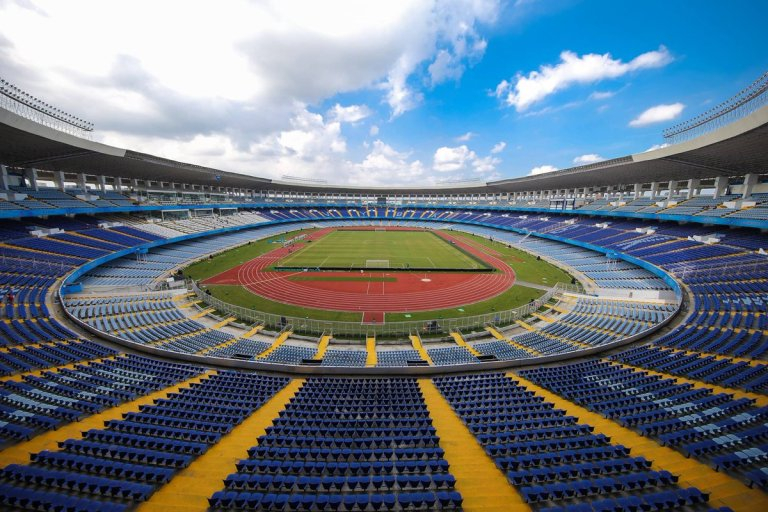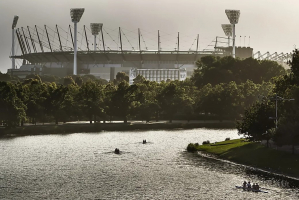Top 10 Largest Stadiums In Asia
Asia, the world's largest continent, is home to 48 countries, each with a diverse spectrum of sporting activities. In Asia, watching sports in a stadium is a ... read more...common pastime. In Asia, there are a number of stadiums with varied capacities. Some stadiums have been expanded to accommodate more people, while the Salt Lake Stadium in India, which was once one of the largest stadiums in terms of capacity, has been reduced by nearly half for security reasons. Over 220 stadiums may be found in Asian countries. All Asian stadiums now have a capacity of more than 30,000 people. The majority of the continent's large stadiums hold important sporting events such as football, cricket, athletics, and baseball. Now let's take a look at Asia's largest stadiums.
-
Pyongyang's Rungrado 1st of May Stadium is located in North Korea. It is one of the world's largest stadiums, with a seating capacity of up to 150,000 people.
The multi-purpose stadium is primarily used for football and sports events. It does, however, frequently host the Arirang Festival, which is a large sporting event. The stadium is called after the island where it was built (Rungrado Islet) and the day it was finished (May 1, 1989). The activities take place on the main pitch, which is 242,000 square feet in size, with the stadium covering a total area of 2.2 million square feet.
The stadium is well known for Kim II Sung's and the country's performances and celebrations. Over 100,000 individuals, including foreigners, attend the event.
Capacity: 150,000
Location: Pyongyang, North Korea

Photo: Rungrado 1st of May Stadium 
Photo: Rungrado 1st of May Stadium -
Narendra Modi Stadium is the world's largest cricket stadium, located near the banks of the Sabarmati River. The stadium was built in 1982 to help develop the province's cricket talent. The stadium had had a seating capacity of 49,000 cricket fans.
Gujarat Cricket Association decided in October 2015, under the visionary leadership of then-GCA President and current Prime Minister Shri Narendra Modi, to rebuild the stadium and make it the world's largest cricket stadium. The restoration project was completed in February 2020, and the stadium can now accommodate over 1.3 lakh cricket fans. The new Narendra Modi Stadium broke the previous record by outstripping Melbourne Cricket Ground's capacity of 132,000 spectators.
Capacity: 132,000
Location: Gujarat, India

Photo: BCCI 
Photo: All India Radio News -
Bukit Jalil National Stadium in Kuala Lumpur, Malaysia, has a capacity of 110,000 people. The multi-purpose stadium opened on January 1, 1998, and hosted the 1998 Commonwealth Games opening ceremony.
Following the Commonwealth Games, the Malaysian national football team made the stadium their home ground. It was also the site of the SAEAC Games in 2001. It is the world's 24th largest stadium and the world's second-largest football stadium. Grass pitch, synthetic track, warm-up track, broadcast studios, matrix scoreboards, and video screen board are among the stadium's amenities. The stadium has also played host to a number of significant events, including concerts.
Capacity: 110,000
Location: Kuala Lumpur, Malaysia
Photo: 123rf 
Photo: Camatic Seating -
The Bangladesh Cricket Board owns and operates Sheikh Kamal International Facility, a freshly constructed cricket stadium. The stadium is located in Cox's Bazar, Bangladesh.
The stadium holds 100,000 people and is primarily used for cricket events. It was chosen to host the 2014 ICC Twenty20 World Cup, but owing to continuing development, matches could not be held there.
On March 5, 2014, the facility hosted its maiden event, a Women's One Day International match. Bangladesh and Pakistan were the opponents in the match. It hosted two Under-19 One Day International matches, one between Bangladesh and the other between South Africa and Bangladesh. Those two matches were both won by a single goal. Currently, the ground hosts Bangladesh U-19 One Day and Unofficial Test matches, as well as Bangladesh A team fixtures.
Since the 2016 Under-19 Cricket World Cup, the facility has been utilized for women's and Under-19 team training, as well as select games of the High-Performance Unit.
Capacity: 100,000
Location: Cox's Bazar, Bangladesh
Photo: sportsshow.net 
Photo: surfacesreporter.com -
The Salt Lake Stadium, also known as the Vivekananda Yuba Bharati Krirangan, is an 85,000-seat multipurpose stadium in Bidhannagar, Kolkata, India. It was founded in January 1984 and is the home venue of ATK Mohun Bagan, East Bengal, and Mohammedan football clubs. The Indian national football team is also based there.
It was the world's largest football stadium before its refurbishment in 2011, with a seating capacity of 120,000. It was the world's largest football stadium prior to the construction and completion of Rungrado May Day Stadium in 1989. The stadium played host to the final match of the 2017 FIFA U-17 World Cup, as well as previous tournament matches. The stadium was only open to 66,687 spectators as part of security precautions for the 2017 U-17 World Cup. It will be used once more for the FIFA U-17 Women's World Cup in 2021.
The stadium's all-time high attendance was 131,781 for the Federation Cup quarterfinal between East Bengal and Mohun Bagan in 1997.
As part of the preparations for hosting the U-17 World Cup in 2017, the stadium converted returned to natural grass from artificial turf. During the 2015–16 Calcutta Premier Division season, the new grass was presented during a Kolkata Derby match between East Bengal and Mohun Bagan.
Capacity: 85,000
Location: Kolkata, India
Photo: amazing.zone 
Photo: East Bengal -
The Shah Alam Stadium is located in the Malaysian city of Shah Alam. The 81,144-seat stadium is primarily used for football games, although it may also be used for athletics and other track events. The stadium was built between 1990 and 1994, and it was officially opened in 1994.
The stadium was built using cutting-edge technology, giving it an ideal location for world-class sporting events. Because of its size and exquisite construction, it is also one of Shah Alam's most well-known sights. PKNS FC, a Malaysian league team, plays their home games at Shah Alam Stadium.
Capacity: 81,440
Location: Shah Alam, Malaysia

Photo: Shutterstock/afiqsadali 
Photo: Getty Images -
Guangdong Olympic Stadium in Guangzhou, China, is a multi-purpose arena. According to a statistics study from 2016, it is the country's largest stadium in terms of seating capacity (80,012).
The construction work began in 1998 and was completed three years later on September 22, 2001. It was constructed on the site of the former Huangcun Airport in order to host the 2008 Summer Olympics. It is believed that 1.23 billion RMB was spent on its construction. The stadium's sunscreen roof was designed by Ellerbe Becket, an American architectural firm, resembling layers of petals on a flower. The concept was first unveiled in 1999. The venue has been dubbed "Flower City" as a result of this.
The Guangzhou Pharmaceuticals F.C. welcomed Chelsea F.C. to China for the first time on July 23, 2008.
It has also served as the primary host of the Olympic Games, in addition to leagues and regular matches. The Asian 2010 Games' athletic events, as well as the Asian Para Games, were held in the stadium.
Capacity: 80,012
Location: Guangzhou, China
Photo: 大疆社区 
Photo: tfcstadiums.com -
Beijing National Stadium, often known as the Bird's Nest, opened on June 28, 2008, and was built to host the 2008 Summer Olympics in Beijing, China. For some matches, the stadium also serves as the home of the Chinese national football team. It now has an 80,000-seat capacity for visitors and is ranked seventh in our ranking of Asia's top ten largest stadiums.
Since 2009, the stadium has hosted the Supercoppa Italiana and the 2008 Summer Olympics. The Beijing National Stadium was designed by Herzog & Meuron, ArupSport, and China Architectural Design & Research Group.
Furthermore, with Ai Weiwei's creative input, the authorities erected the stadium for an estimated cost of USD $423 million. Furthermore, the grass is now used as a playing surface at Beijing National Stadium. Surprisingly, the stadiums hosted the 2015 World Athletics Championships.
Capacity: 80,000
Location: Beijing, China

Beijing National Stadium - Photo: sportsshow.net 
Photo: 携程攻略 -
Located in Hangzhou, China, the Hangzhou Olympic Sports Center is a multi-purpose stadium. The stadium is the home of Hangzhou Nabel Greentown and is primarily used for football. The 80,000-seat stadium first opened its doors in December 2018.
The stadium is being constructed by NBBJ in collaboration with CCDI. The stadium is situated on a 400,000-square-meter plot of land on the Qiantang River's western bank, directly across from the city's new "QianJiang" CBD complex. The main stadium began construction in 2011 and is expected to be completed in 2014/15.
The Asian Games will be held in Hangzhou in 2022.
Capacity: 80,000
Location: Hangzhou, China
Photo: Huang Zongzhi 
Photo: Shao Feng -
Tokyo, Japan is home to the Japan National Stadium. On the site of the previous National Stadium, the stadium opened on December 21, 2019. It has an 80,000-seat capacity and is the home of Japan's national football and rugby teams.
The Japan National Stadium, formerly known as New National Stadium, is a multi-purpose stadium in Kasumigaoka, Shinjuku, Tokyo, Japan, that is primarily used for association football. The stadium hosted the opening and closing ceremonies, as well as track and field athletics events at the 2020 Summer Olympics and 2020 Summer Paralympics, which took place in 2021.
The old National Stadium was demolished in May 2015, paving the way for the new stadium's development to begin on December 11, 2016.
After a public outcry over rising construction costs, Japanese Prime Minister Shinzo Abe canceled the initial plans for the new stadium in July 2015 and launched a rebid. As a result, the new design did not arrive in time for the 2019 Rugby World Cup, as planned. In December 2015, a new design by architect Kengo Kuma was chosen to replace the original design, which was finished on November 30, 2019.
Capacity: 80,000
Location: Tokyo, Japan
Photo: archdaily.com 
Photo: Olympic Channel






























